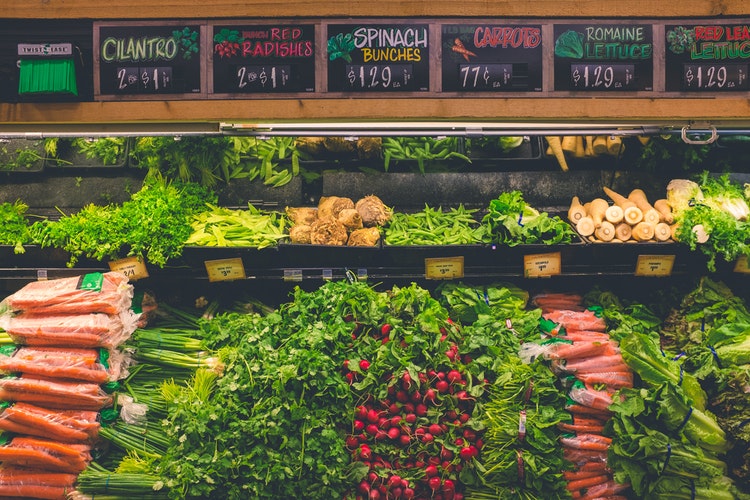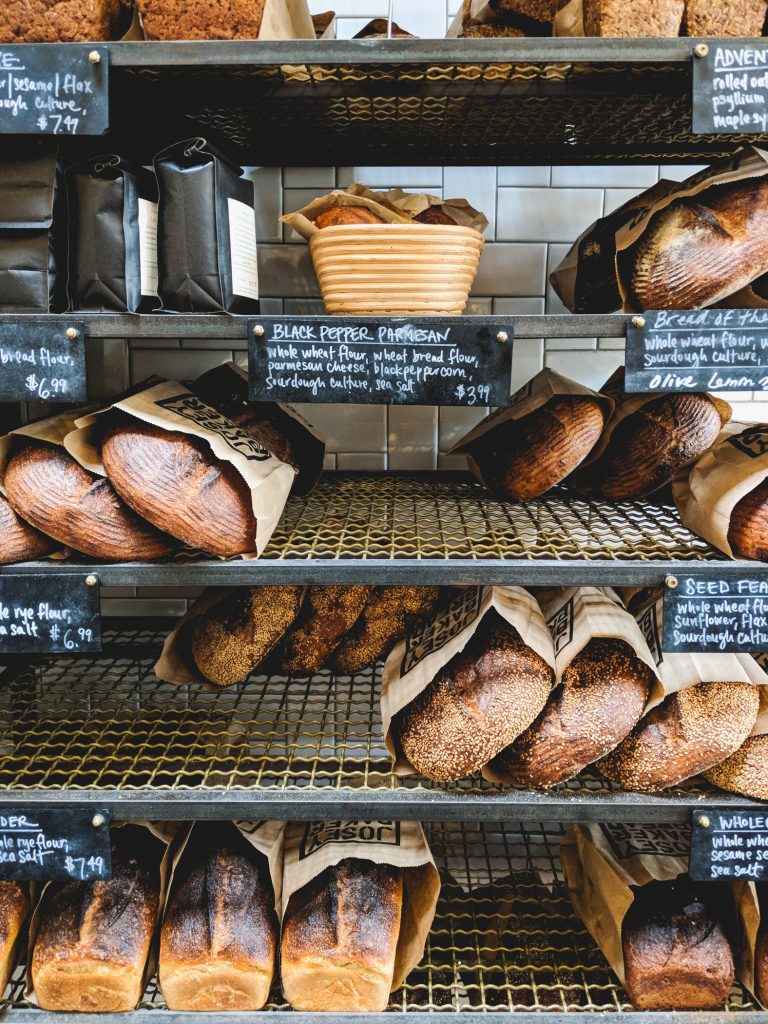Alex Waite, freelance food scientist on Kolabtree, provides 5 tips for on how to develop a new food product and get it ready for the shelves. Updated 20/08/2021.
How many times a day do you get asked, “So what is it that you do for a living?” Admittedly, I have a fairly challenging time answering that question. By education, I’m a nutritionist and by profession I’m a food product developer, but I often just tell people I’m a food scientist. I realize this is merely a question of semantics, but I find these qualities very distinguishable and equally important to “what it is that I do.”
When I mention the food science and food product development aspects, people are very curious and often respond with, “So you get to play with food all day?? That’s so cool!” While yes, playing with food (aka “bench work”) is one aspect of getting to develop a food product, there’s quite a bit more to it. It can be a daunting process for even the most seasoned professionals, but don’t worry, I got you covered. Here’s 5 quick tips on how to develop a new food product to ensure smooth and successful commercialization:
1.Get Clarity — Communication skills 101
Have you ever heard the term, “blue sky innovation?” Wikipedia defines this as, “research without a clear goal” and “curiosity-driven science.” This is the land of possibilities, people. It’s what dreams are made of, where elves are feverishly crafting toys in the North Poll, and Batman is fighting crime on the streets of Gotham City. Now I can’t overstate the importance of blue sky innovation, I would argue that most of us have no shortage of great ideas. We’re human; we’re creative, innovative, idea generating, crime fighting machines….oops, how’d that get in there?! I’ll save the blue sky innovation discussion for another post as it deserves attention in it’s own right. Besides, it’s the ridiculously fun part. That being said, it’s easy to get lost in that space and can prohibit getting stuff done if not managed properly.
Now, in order to be creative, one must have a foundation of structure to do so. Let me explain.
It’s important to have a clear understanding of the intended outcome to craft a product to meet those specifications. That means all parties (i.e., marketing, sales, executives, etc.) must come to this agreement ideally BEFORE beginning the project. Now the world is not perfect and we all know this, so it’s your responsibility in the R&D phase to maintain some level of flexibility and manage expectations along the way. Some questions to consider before diving into bench work (i.e., establishing the foundation in order to be creative) in hopes of avoiding future headaches:
Category: What category does this product fall under? Are there multiple types of products within this category (ie bars; granola bars, nutrition bars, filled bars, etc.) If so, which type is your focus?
Competitors: Who are the competitors in this space? What are you competitor’s product attributes? How do you want to differentiate within this space? What’s the average retail price (ARP) of your competitors?
Target market: Who is the target audience for this product? What’s important to this audience? How does this product solve a challenge for this consumer?
Packaging/Launch strategy: What’s the ideal packaging for this product? Where is this product intended to be sold (retail, club, single serve, bulk)? What’s the target retail cost and package size?
Product specifications: What are the nutritional targets? What’s the necessary shelf-life? What claims do you want to make?
Manufacturing: Where is this product being manufactured? Will it be made in-house or via co-manufacturer? What equipment is available at this location?
Budget: What is the budget for project? What additional resources, if any, are available to complete this project?
Timeline: What is the expected launch date of this project? What are the other critical milestones to take into account?
Decisions: Who is the responsible party for making these decisions? Who is able to decide whether to change direction if that should arise?
Without this level of clarity, it can be really challenging to create a product with intention. I assure you if not properly determined in advance, the project will steer off course, deadlines and budgets will not be met, and time will be wasted. Now if you don’t know the answers to these questions, how do you plan to get them? As the director of the project, it is your responsibility to figure it out. Should the project change focus mid-course, as it often does, that’s okay and as long as you communicate the results of those changes (ie more time, more money, etc.), the project can continue.
2. Sourcing — Not as easy as it sounds

So I’ve made some really good recipes in the kitchen before and I’m sure you have too. I’d go to the grocery store, check out Amazon, and order things from the abyss of the internet. We’ve all done it. The problem is that ingredient you just Amazon Primed might not be available to the specification you need for commercialization. You really loved that sweet potato flour from some mom and pop shop? Is it available in Organic or how about gluten-free (if needed)? Can they handle pallet size volumes year round? What’s the cost per pound of that ingredient? Does that work to meet you total costing parameters?
If that ingredient isn’t available in commercial volumes, you’ve just created a recipe using an ingredient that now needs to be changed. No big deal, you say? Just find a commercial source for that ingredient. Well sometimes that commercial source doesn’t exist. Or when you find that commercial source and receive a sample of that ingredient, sometimes that ingredient is very different from the one you used for development. Maybe that commercial source doesn’t act the same in the recipe you created. Maybe it tastes a bit different. Maybe the color changes the dough to something you don’t like.
My suggestion is to start by sourcing the ingredients you need from commercially viable sources. Check the specifications, nutritionals, costing, and quality before beginning development with that ingredient. Now sometimes because of deadlines, you need to get something in your hands ASAP and don’t have time to source. Get that ingredient however you can to save time, but then IMMEDIATELY start sourcing. This method can be fine in considering common ingredients, but the more limitations you have due to allergens or otherwise, the more challenging that ingredient will be to find. Got it?
3. Manufacturing & Quality — Kind of a big deal

So you have a recipe, huh? Awesome! You’ve met your nutritional targets, costing parameters, and it tastes pretty darn good. That’s a big first step. Now we need to understand if it’s scalable.
As I mentioned above, it’s important to get clarity on the manufacturing capabilities up front so when you’re developing the recipe, you’re keeping in mind the limitations or qualities necessary in that recipe to work within that equipment. For instance, if you’re making a cracker that will be sheeted and cut, what’s the dough like? Does it have enough stretch? Is it too sticky, too dry, or just right? What thickness, bake temps, and bake times provide the best texture and look for the product?
Keep in mind, ALL this will change in the manufacturing setting, but the more you know about your recipe in the development phase, the more tools you have in your tool kit when you go into plant trials and need to figure out how to make it work. I’m just gonna be up-front here: I HAVE NEVER MADE A RECIPE IN THE KITCHEN THAT WORKED PERFECTLY THE FIRST BATCH IN THE PLANT TRIAL. As a recovering perfectionist, this broke my heart. I thought I didn’t do a good enough job or that I didn’t prepare enough. It took me a few trials to realize this is not the case. You must go in expecting to make changes to the recipe. So the dough isn’t sheeting? What changes do you need to make on the fly to make it sheetable? Will those changes affect the nutritional composition of the product? If so, what can you do about that? You must be on your A game and be prepared to make decisions on the fly. The more work you do in advance, the more prepared you will be.
In addition to meeting product specifications and manufacturing needs, quality must always be on the forefront of your mind. What’s the water activity of that product? Does it meet specification for shelf-life? If not, back to the drawing board. What tweaks do you need to make, keeping in mind all of the above?
If it seems like a lot, that’s because it is. Having a team of experts in place to support this process is essential for success.
4. Cost — The reality check

So you have a recipe, have sourced all your ingredients, managed to sheet the damn thing in the factory and now have a yummy, commercialized product. Now what?
While doing everything above, it’s important to keep in mind the cost of that recipe. What are the cost of the ingredients? What about packaging? How about shipping those ingredients or that product to their destination? What’s manufacturing/overhead cost of producing that product? What promos are the sales team using to sell the product? All this contributes to the bottom line. Are these margins acceptable to you/your company? Does this product meet the specification you outlined before starting the process?
Now I’m not suggesting you wait until after you commercialize the recipe to consider the cost. This is something to keep in mind during the entire process. So you found this really exotic, tasty, nutrient dense, unique, and expensive ingredient from the Amazon? How much is that bad boy gonna cost ya? Does it add enough value to the product that it would appeal to consumers in a way that justifies that expense? If not, time to reconsider.
Something to keep in mind is the optimization process that occurs following the initial scale up. Are there ingredient price breaks as volumes increases? Can you speed up the manufacturing process to increase the through put and cut down the cost per unit? Where else can you optimize this SKU and how long do you expect it take to reach your target margin?
5. Project Management — The gift that keeps on giving
As with all extensive launches, project management is super important to the smoothness of the product launch. Establish timelines, keep yourself organized, do your best to prepare in advance, and quickly change course if necessary. Making communicating with your internal team and external vendors/consultants a priority will make the process a lot more manageable for all those involved. If something falls through the cracks, as it always does, do your best to resolve the problem and keep going. There’s a sequence of events that needs to occur in order to launch a product. You need to do X in order to complete Y and it simply can’t happen in any other way. It’s important to hold everyone accountable to their parts or the project will simply not get off the ground.
So by now you’re overwhelmed, but prepared. I know, I get it. This is what I do for a living. It’s not easy, but it’s totally worth it. There’s nothing quite like seeing the your product on the shelves at your local market or hearing about how much people love it or how it came in clutch on that epic hike they completed the other day. Though this is no easy feat, you can absolutely do it. The reality is you can’t be an expert at everything, so know when to ask for help along the way….I’m right here waitin’ for ya! I’d know we’d make a great team.
————-
Still need help on how to develop a new food product, meet compliance standards and take it to market quickly? Consult a freelance food scientist on Kolabtree.





